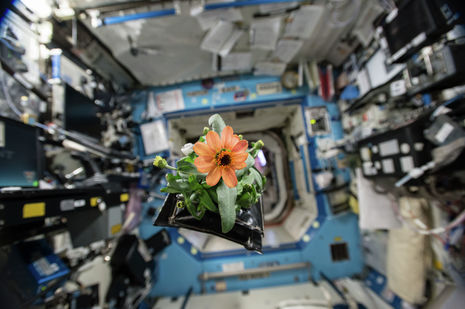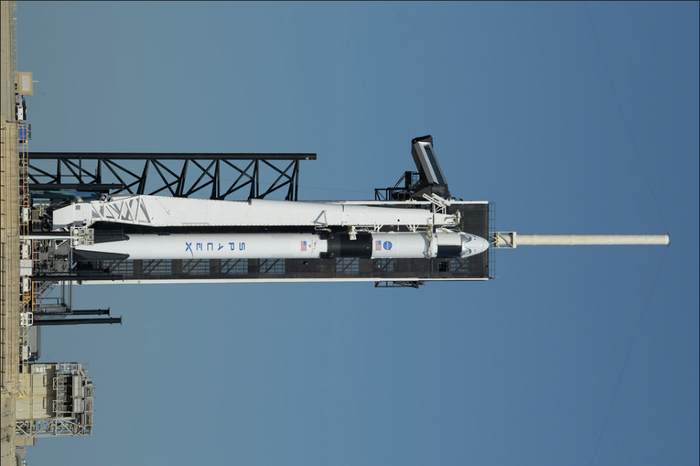Plants in space – how our little green friends may be key to future missions
Ben White introduces Veggie, a system designed to grow fresh produce onboard the International Space Station

Confinement indoors with a looming sense that the world outside the window is desolate, isolated, and dangerous is, for many of us, an unfortunate novelty of the pandemic. However, for astronauts, this is the daily reality. 408 kilometres above Earth, a crew of up to seven astronauts on board the International Space Station (ISS) are confined to a living and working space that is a little larger than a six-bedroom house.
During the pandemic, there was a large increase in the number of people taking up gardening and buying houseplants to alleviate the stresses of indoor isolation, with many even starting to produce a small portion of their own food. Interestingly, NASA has been using a similar approach to help provision astronauts onboard the ISS for several years. Moreover, many mission planners believe that growing plants onboard spacecraft, or on future outposts on the Moon and Mars, will be vital for the success of manned space missions in years to come.
Currently, in order to ensure astronauts are kept properly fed, the ISS is almost entirely reliant on resupply missions from Earth, mostly prepared in near-sterile conditions. With resupplies only arriving every two months, this food is mostly designed to have a long shelf life. Not only does fresh produce only keep for a short period, it also takes up a lot of valuable weight and space in resupply spacecraft. As such, fresh food is typically a rare treat that is eaten within a few days of arrival. However, since 2014, NASA has been successfully broadening astronauts’ diets by growing fresh crop plants onboard the ISS – enter a system called ’Veggie’.
“Currently, the ISS is almost entirely reliant on resupply missions from Earth, mostly prepared in near-sterile conditions”
In Veggie, plants are grown inside specialised Kevlar pillows: inside each pillow, water is wicked through by a growth mat (much like the liquid moving through a lateral flow test) to ensure that all plants are watered evenly in zero G. These pillows are then housed in collapsible plastic ‘bellows’ that further protect the growing plants and allow for greater control of growth conditions such as light. Additionally, plants are grown under red LEDs as scientists found this encourages them to grow more similarly to those we are used to on Earth while in zero G conditions. Initially, growth pillows delivered to the ISS already contained seeds that had been pre-planted on Earth, but more recent experiments involve using a special film to plant seeds in orbit – bringing the system one step closer to self-sufficiency.
So how has this been received? A big part of Veggie’s success has been due to its simplicity. The system is designed to work in the ambient conditions of the ISS, and its relative lack of mechanical parts and collapsible nature means it can maximise plant growth while taking up minimal space. Since its installation, Veggie has been used to grow several crops, including lettuce, mustard, cabbage, and kale. These were chosen for their relative ease to grow in zero G, high nutrient content, and, importantly, their taste. A NASA outreach programme that ended in 2018 even saw high school students run experiments that helped select Pak Choi and ‘Dragoon’ lettuce as new crops to grow on the ISS.
“These plants are a connection to Earth. The look, feel, taste, and smell all remind us of life on Earth (...)”
As well as providing food, the plants grown onboard have had another considerable benefit: many astronauts found that working with plants led to a notable improvement in their mental wellbeing. The increased variety in their diets, as well as a more pleasurable eating experience from the taste, texture, and aroma of fresh produce, helped improve their mental health. Additionally, astronauts found that simply having the plants growing on the station was a source of happiness. ‘These plants are a connection to Earth. The look, feel, taste, and smell all remind us of life on Earth,’ explains NASA astronaut Mike Hopkins, ‘and that connection is good for our mental health.’
While Veggie is a long way away from catering to the full dietary needs of the entire ISS crew, it still is a significant step towards long-term self-sustaining space missions. Future manned trips to the Moon and Mars will have to be less reliant on resupplies (the shortest transit time to Mars is around 7 months!), so any way of providing astronauts with fresh and nutritious food may go a long way to ensuring their success.
Potential benefits to crew morale also cannot be understated – particularly for long missions. Astronauts on future Artemis missions to the Moon, some of which may extend up to two months, as well as potential Mars missions, will be expected to perform under stressful, dangerous, and isolating conditions, and so any method of improving their mental health will go a long way to delivering success.
As we continue to explore our solar system, it seems our little green friends may be key allies more than we thought.
 News / Clare Hall spent over £500k opposing busway 24 December 2025
News / Clare Hall spent over £500k opposing busway 24 December 2025 News / Caius mourns its tree-mendous loss23 December 2025
News / Caius mourns its tree-mendous loss23 December 2025 Comment / The ‘class’ of Cambridge24 December 2025
Comment / The ‘class’ of Cambridge24 December 2025 Comment / Yes, I’m brown – but I have more important things to say22 December 2025
Comment / Yes, I’m brown – but I have more important things to say22 December 2025 Interviews / Politics, your own way: Tilly Middlehurst on speaking out21 December 2025
Interviews / Politics, your own way: Tilly Middlehurst on speaking out21 December 2025










